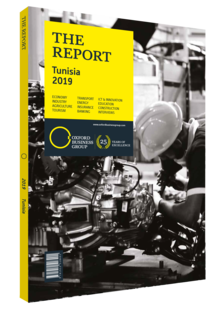New regulatory incentives and valuation techniques boost institutional investment in the Tunisia Stock Exchange
Activity on the Tunis Stock Exchange (Bourse des Valeurs Mobilières de Tunis, BVMT) has traditionally been characterised by demand from relatively small investors, as well as a limited amount of international investment. Meanwhile, the contribution of institutional investors has been marginal, negatively affecting the development of the country’s capital markets. However, a move towards mark-to-market valuation, coupled with new regulatory incentives, is expected to boost institutional investment in the BVMT.
Institutional Activity
Overall, institutional investment accounted for less than 10% of the BVMT in 2018. This figure includes collective investment in mutual funds, insurance funds, the Deposit and Consignment Office (Caisse des Dépôts et Consignations, CDC), pension funds, venture capital investment firms and financial holdings companies.
As a result of this dearth of institutional investment, the market lacks liquidity and is subject to volatility, with share prices prone to rapid rises and falls. A further sign of the underdevelopment of the BVMT is the behaviour of casual investors, who react to certain events but not to other, more complex opportunities. Given weak and inconsistent demand, the BVMT remains undercapitalised and unrepresentative of the Tunisian economy. Tunisia’s all-share index, the Tunindex, has been adversely affected by the absence of sectors such as energy, telecoms, agriculture and tourism – all of which could have listed on the exchange during periods in which economic activity was constrained.
Bond Market
The situation is different on the bond market, where there is a strong presence of institutional investors, notably insurance companies and mutual funds. The mutual fund market is dominated by fixed-income funds despite regulatory changes, including the professionalisation of portfolio managers, the creation of incentives for independent asset-management companies, and an initiative by the CDC to promote stock funds and consolidate institutional investment on the BVMT. Despite these efforts, mutual funds are mainly invested in debt securities – such as private bonds and government bonds – with less than 7% of assets invested in stocks. This situation is a consequence of the tumultuous past of balanced mutual funds in the late 1990s, which contributed to public dissatisfaction with this type of fund and an aversion to risk among mutual funds, banks and insurance companies. Indeed, balanced mutual funds represented only 14% of the assets of all mutual funds held in late 2018. This aversion to risk has pushed them towards buy-and-hold behaviour on the bond market. To hedge against interest rate risk, investors record subscriptions on a historical cost basis and hold investments until maturity. This has led to the low level of trades on the secondary debt market.
New Valuation Mechanism
While such practices have prevailed for a number of years, they are expected to disappear by 2020. This is because the shift towards the mark-to-market valuation of assets and liabilities is set to encourage asset managers to pursue a more active strategy and become more vigilant about interest rate risk. The long-awaited introduction of this mechanism will dispel the incorrect perception among investors that interest rate instruments are without risk. As their perceptions evolve, institutional investors can be expected to overcome their hesitation and reorient themselves towards the BVMT, enabling them to take advantage of the benefits it has to offer. Indeed, stronger involvement on the exchange by institutional investors presents a win-win situation. It will help them to diversify the risk-return profile of their portfolios, enabling them to select opportunities with strong fundamentals and attractive valuation levels. It will also help the BVMT develop by attracting new investors with substantial resources and a long-term approach, thereby stabilising the country’s financial markets. The greater presence of institutional investors will also increase trading volumes, boost the liquidity of the exchange and improve the quality of research.
You have reached the limit of premium articles you can view for free.
Choose from the options below to purchase print or digital editions of our Reports. You can also purchase a website subscription giving you unlimited access to all of our Reports online for 12 months.
If you have already purchased this Report or have a website subscription, please login to continue.

